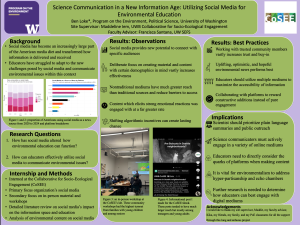Science Communication in a New Information Age: Utilizing Social Media as an Environmental Education Tool
As the rise of social media substantially alters the information diet of most Americans, it is imperative that science communicators adapt to engage with these new mediums. While social media brings new potential for community organizing, collective action, and public outreach, it also intensifies the impact of polarization and partisan echo chambers. With the current divisiveness of environmental issues such as climate change in the current online political discourse, understanding how environmental education can operate within the context of social media is particularly salient at this time.
This presentation aims to answer how educators can successfully convey information on social media, with a specific focus on overcoming polarization in environmental contexts. Drawing from my experience working in an internship focused on creating educational materials on social media, a substantive literature review assessing social media’s impacts on information delivery, and a detailed assessment of existing science communication materials on social media, I provide several suggestions for educators. I argue that by specifically catering delivery methods and messaging to specific audiences, utilizing non-traditional speakers and mediums, and making plain language summaries and science communication a priority instead of an afterthought, educators can more effectively convey information through utilizing the new toolkit which social media provides. Through harnessing the power of social media and engaging in these non-traditional mediums we can increase the accessibility of scientific knowledge, breakthrough partisan divides, and bridge the gap between the scientific community and general public.
